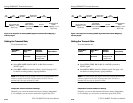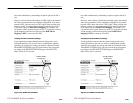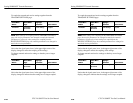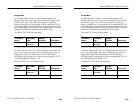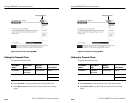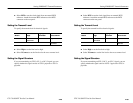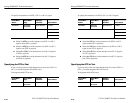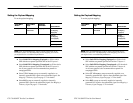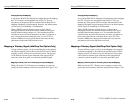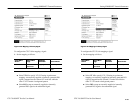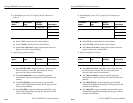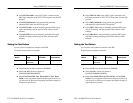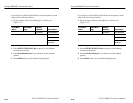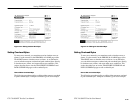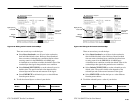
Setting SDHSONET Transmit Parameters
3–72
CTS 710 SONET Test Set User Manual
Unequipped Payload Mapping
If you choose Bulk Fill No Mapping (Unequipped) payload mapping,
the CTS 710 places the unequipped code in byte C2. You can
transmit any of the pattern choices available with the Bulk Fill No
Mapping (Equipped) payload mapping. However, the default pattern
(all zeros prior to scrambling) is recommended.
When a SONET network element receives a signal with an
unequipped channel, the network element should pass the signal
through without making changes to it. This treatment should be
consistent from one end of the network to the other. A loopback at
the far end of the network would then allow a sole CTS 710 to
transmit a PRBS across the payload channel and verify the error
performance of the entire link from end to end.
Mapping a Tributary Signal (Add/Drop/Test Option Only)
To map a tributary signal, you first set the Mapping to the appropri-
ate tributary mapping (as described in the previous section). When
mapping a signal, you must also specify the payload. The payload
can be either an external signal connected to the appropriate IN
connector on the front panel or an internally generated signal.
Mapping a Tributary with VT1.5 Floating Async Payload Mapping
When you use the VT1.5 Floating Async mapping, you must also
specify the virtual tributary under test and payload (see Figure 3–26).
Setting SDHSONET Transmit Parameters
3–72
CTS 710 SONET Test Set User Manual
Unequipped Payload Mapping
If you choose Bulk Fill No Mapping (Unequipped) payload mapping,
the CTS 710 places the unequipped code in byte C2. You can
transmit any of the pattern choices available with the Bulk Fill No
Mapping (Equipped) payload mapping. However, the default pattern
(all zeros prior to scrambling) is recommended.
When a SONET network element receives a signal with an
unequipped channel, the network element should pass the signal
through without making changes to it. This treatment should be
consistent from one end of the network to the other. A loopback at
the far end of the network would then allow a sole CTS 710 to
transmit a PRBS across the payload channel and verify the error
performance of the entire link from end to end.
Mapping a Tributary Signal (Add/Drop/Test Option Only)
To map a tributary signal, you first set the Mapping to the appropri-
ate tributary mapping (as described in the previous section). When
mapping a signal, you must also specify the payload. The payload
can be either an external signal connected to the appropriate IN
connector on the front panel or an internally generated signal.
Mapping a Tributary with VT1.5 Floating Async Payload Mapping
When you use the VT1.5 Floating Async mapping, you must also
specify the virtual tributary under test and payload (see Figure 3–26).



